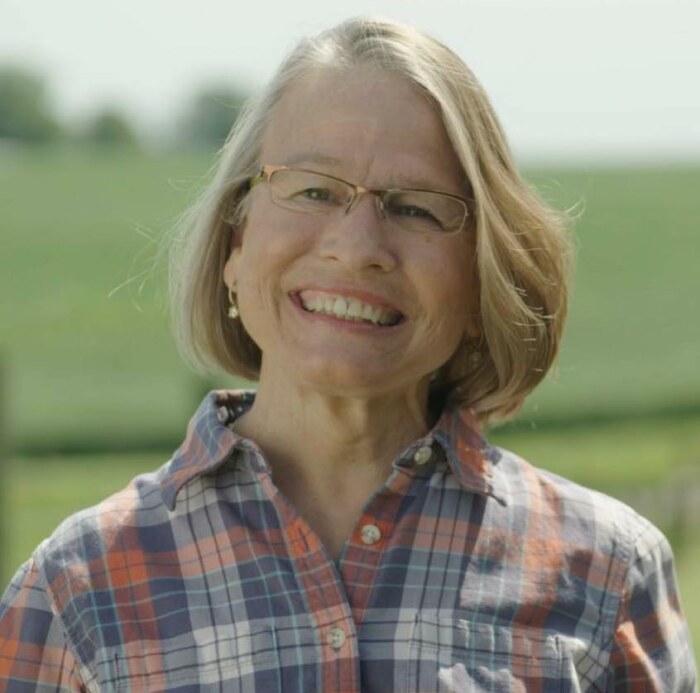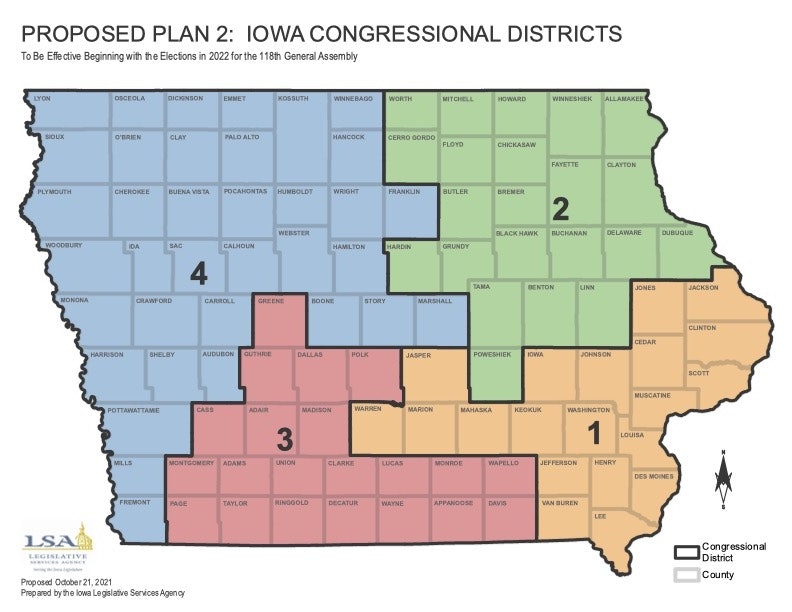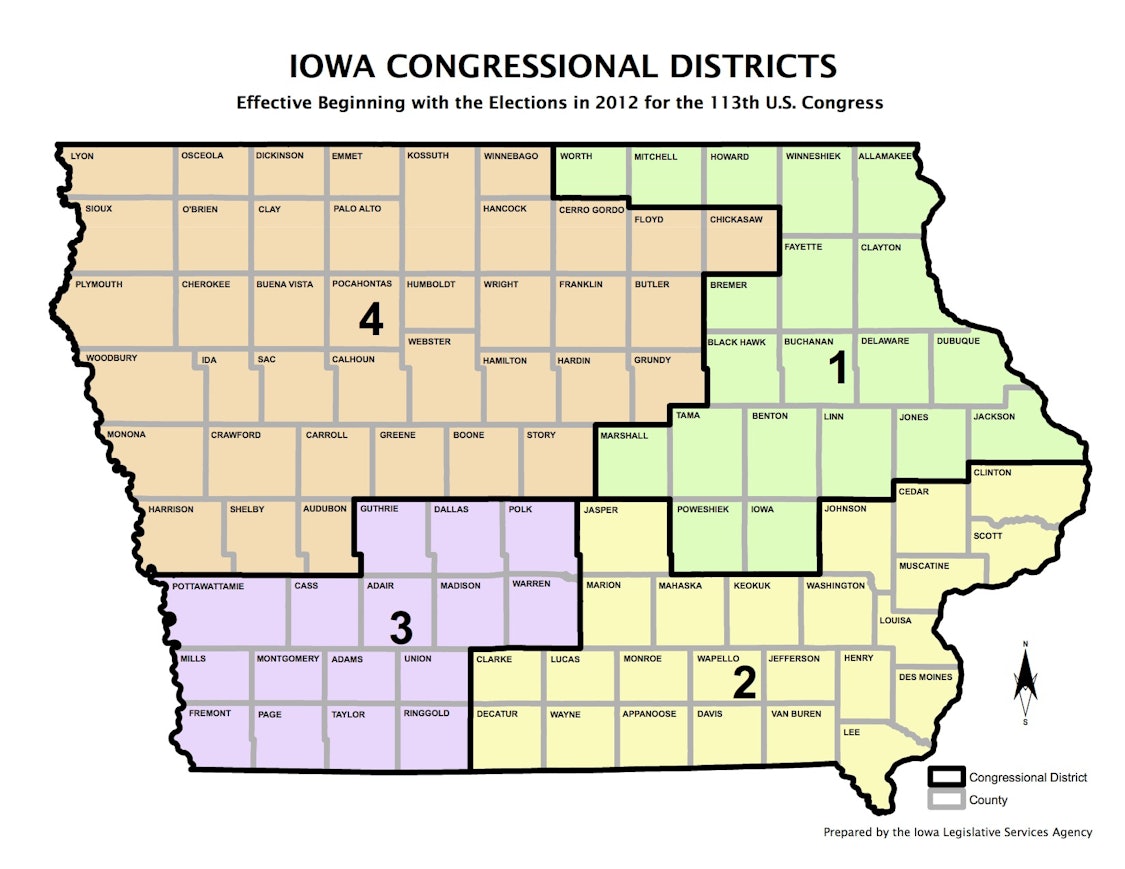There are winners and losers in every redistricting plan. The second set of nonpartisan Iowa maps, which the Legislative Services Agency released on October 21, was much kinder to U.S. Representative Ashley Hinson than the first map, which put Hinson in a Democratic-leaning Congressional district.
Fortunes were reversed for U.S. Representative Mariannette Miller-Meeks. The first plan put her in a district that Donald Trump carried by more than 10 points in 2020. Today’s proposal puts most of the territory she now represents in a district Trump carried by about 2 points. She was certified the winner last year against Rita Hart by six votes in a district Trump carried by 4 points.
Even worse, Miller-Meeks’ home in Ottumwa (Wapello County) is part of the proposed third Congressional district, where Trump outpolled Joe Biden by just 0.4 points.
On Iowa social media feeds today, I’ve seen some speculation about how Miller-Meeks might fare against Democratic Representative Cindy Axne, or about Democrat Christina Bohannan being able to run for Congress in an open seat covering most of southeast Iowa.
I wouldn’t spend a lot of time pondering those scenarios.
Miller-Meeks said in a statement on October 21,
“I will be eager to get to know the people, businesses, communities in my newly drawn district when the process is finalized,” she said. “In the meantime, my focus remains on serving the constituents of the current 2nd Congressional District to the best of my ability.”
Here’s the Congressional map from the second redistricting plan, which I suspect Republicans will accept. Wapello County is at the eastern edge of the new IA-03.
Here’s the current map.
As you can see, sixteen of the 20 counties in the confusingly numbered IA-01 are in Miller-Meeks’ current district, IA-02. Only eight counties Miller-Meeks now represents (along the southern two tiers) are part of the new IA-03. Their combined population, according to the 2020 census, is 96,965. That’s about 12 percent of the district’s total population.
As of April 2020, Polk County alone had 492,401 residents, and Dallas County (containing fast-growing suburbs to the west of Des Moines) had 99,678. Both have probably gained population since then. But going by the 2020 census numbers, about 74 percent of IA-03 residents live in those two counties.
Polk and Dallas may account for a slightly smaller percentage of registered voters in the proposed IA-03, because so many families with young children live there. The fact remains: Miller-Meeks is not poised to compete well against Axne, who has represented the population centers of IA-03 since 2019. She might struggle to get through a Republican primary, facing candidates who are better-known in the Des Moines area.
If the Iowa House and Senate approve this map, I anticipate Miller-Meeks will buy or rent a second home somewhere in the new IA-01.
Final note: if you missed Evan Burger’s analysis of the latest Congressional map, check it out here.
UPDATE: A reader points out that people don’t have to live in a U.S. House district to run there—they only have to live in the right state. That’s true, but in Iowa, members of Congress have moved in this kind of situation. Leonard Boswell found a place to live in Polk County (IA-03) after the map adopted in 2001 put his Decatur County farm in what was then IA-05. When Bruce Braley and Dave Loebsack were both placed in IA-01 in 2011, Loebsack moved to Iowa City (part of IA-02). The same year, Tom Latham moved to Dallas County (IA-03) to avoid being in the same district as Steve King (IA-04).
I believe Iowans would resist electing someone to Congress who doesn’t live in the district.
UPDATE: Forgot to mention that because of redistricting, Jim Leach moved from Davenport to Iowa City for the 2002 election cycle.
LATER UPDATE: Shane Vander Hart posted the voter registration numbers for the proposed districts. The new IA-01 would have 165,990 registered Democrats, 150,439 Republicans, and 147,261 no-party voters.
The new IA-03 would have 165,903 registered Democrats, 155,315 Republicans, and 132,390 no-party voters.



